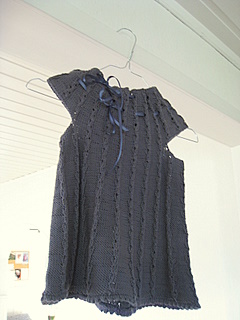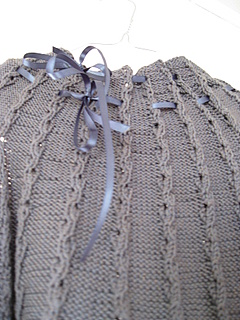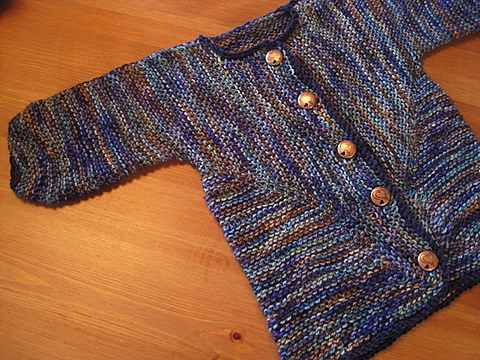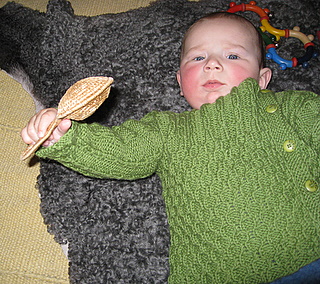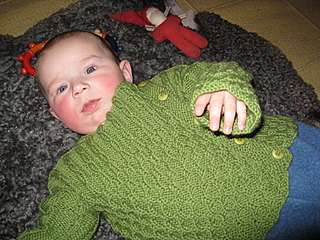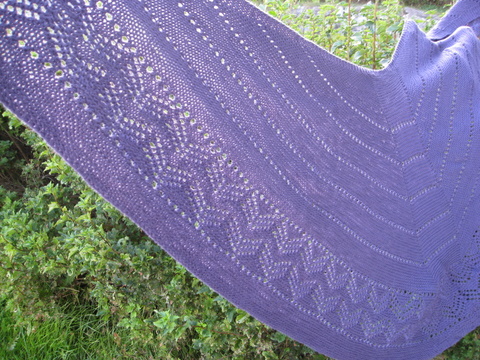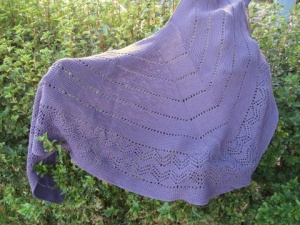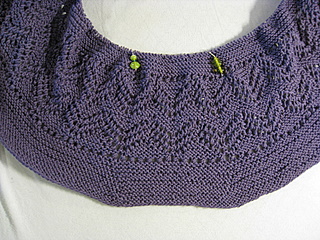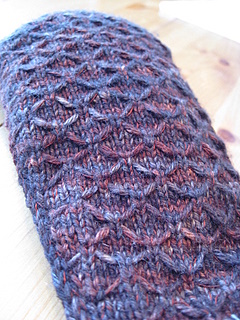
Pattern: 1331 headband, pieced together by myself. See below.
Yarn: Handmaiden 4 ply Silk Cashmere, colour ebony. Work weighs 27 g.
Sock/fingering or light DK yarn would work for this. Wool, alpaca, or blends thereof would be lovely me thinks.
Needles: 2.5 mm
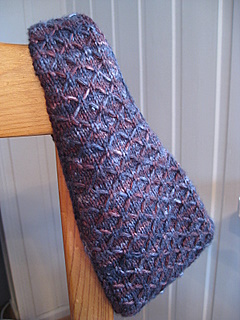
I’ve had this gorgeous yarn in my stash for several years meaning to make a shawl or arm warmers or something. Eventually I decided that the fine yarn of this fibre content would (maybe?) pill and stretch out of shape from the wear it’d get in handwarmers, and it didn’t please me when paired with the beautiful Hamamelis shawl which has been The Must Knit pattern on my mind lately. And when I looked at the subtle variegation in the yarn I kept thinking of the stitch pattern from the Leyburn socks that I love, imagining how perfect it would be for that texture. And thinking that I had been meaning to adapt the stitch pattern to a headband, and that I really need another headband because I completely depend on the one I bought on a holiday 5 years ago to keep my hair out of my eyes for all outdoor activities, and the lack of a 50 cent headband should I loose it will prevent me from using my kayak, and I really should use my kayak a lot because it cost way more than the headband but the more I use it the more I get for the money I paid or something.
So I knit a headband. It fits me perfectly and the yarn does not my sensitive forehead irritate. So I will most likely make more of these. Before I forget how to I will write down my pattern notes here, and you can make one too if you want. Here is how:
I call it the 1331 headband because you start with 13 stitches, increase to 31 and then decrease down to 13 again.
Note: First stitch of every row is slipped, always. This counts as a knit/purl stitch in pattern.
k – knit
p-purl
sl – slip stitch
wyif – with yarn in front of work
Cast on 13 sts. Purl one row. Then start slip stitch pattern:
Row 1: Sl 1, *k1, sl 5 wyif* end k1.
Row 2 : Sl 1, purl to end.
Row 3: Sl 1, knit to end.
Row 4: slip 1, *p2, insert right needle under loose strand in front and lift it onto needle to the left of next st, p next stitch, let loose strand down, p3*
Row 5: Sl 1, k2, *k1, sl5 wyif; repeat from *, end k4
Row 6: Sl 1, purl to end
Row 7: Sl 1, knit to end.
Row 8: Sl 1, purl 3, *p2, insert needle under loose strand in front and lift it onto needle to the left of next st, p next stitch, let loose strand down, p3* end p3
Continue until work measures 5 cm. Then increase by making one stitch (m1) inside the outermost stitch on each side on row 1, next time on row 5 and again on row 3 the next repeat. 6 sts increased/19 sts total.
Repeat increase section when work measures about 12 cm, and about 17 cm. There will now be 31 sts total. Continue knitting in pattern until work measures half your head circumference when appropriately stretched. Now calculate at what points to do decreases to match the increases on the first half: total length minus17 cm, 12 cm and 5 cm.
(Remember, knitting is flexible and nothing needs to be exactly on the centimetre. Adjustments can be made by knitting the last section shorter/longer than 5 cm before casting off).
Make a total of 3 decrease sections approximately matching the position of the increases on the first half. Decrease by ssk and k2 tog in each side respectively, one stitch in from the outermost stitch. First decrease at row 3 in pattern, then at row 1 and 5. Adjust pattern stitch accordingly as stitch count decreases.
You are now down to 13 stitches again. Cast off when work has reached desired length.
The slipped stitches give a nice selvedge along the work. Make an edging of applied I-cord by casting on 3 sts, then knitting two and knitting the third stitch together with a stitch from the selvedge. Tutorial found here. (I didn’t pick up the selvedge stitches first, just knitted them together with the third I-cord stitch as I got to them). The I-cord should pull the work slightly together.
Sew Cast on and Cast off edge together. Weave in ends and wear proudly.
(I haven’t test knit after these instructions, so if you do and it works, or if you try and end up with something else than a headband or find other errors, could you please send me an email?)

Row 1: *K1, sl 5 wyif; repeat to end of instep stitches, end k1.
Row 2 and all even-numbered rows: Knit.
Row 3: K3, *insert needle under loose strand and knit next stitch, bringing stitch out under strand, k5;
repeat from *, end k3.
Row 5: Sl 3 wyif, *k1, sl5 wyif; repeat from *, end sl 3 wyif.
Row 7: *Knit first stitch under loose strand, k5; repeat from *, end knit first
stitch under loose strand.
